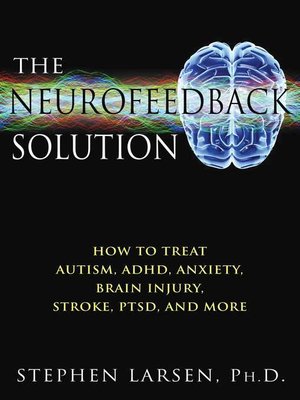The Neurofeedback Solution
ebook ∣ How to Treat Autism, ADHD, Anxiety, Brain Injury, Stroke, PTSD, and More
By Stephen Larsen

Sign up to save your library
With an OverDrive account, you can save your favorite libraries for at-a-glance information about availability. Find out more about OverDrive accounts.
Find this title in Libby, the library reading app by OverDrive.



Search for a digital library with this title
Title found at these libraries:
| Library Name | Distance |
|---|---|
| Loading... |
A guide to neurofeedback for better physical and mental health as well as greater emotional balance, cognitive agility, and creativity
• Provides easy-to-understand explanations of different neurofeedback methods—from the LENS technique to Z-score training
• Explains the benefits of this therapy for anxiety, depression, autism, ADHD, post-traumatic stress disorder, obsessive-compulsive disorder, brain injuries, stroke, Alzheimer's, and many other ailments
• Explores how to combine neurofeedback with breathwork, mindfulness, meditation, and attention-control exercises such as Open Focus
What is neurofeedback? How does it work? And how can it help me or my family?
In this guide to neurofeedback, psychologist and neurofeedback clinician Stephen Larsen examines the countless benefits of neurofeedback for diagnosing and treating many of the most debilitating and now pervasive psychological and neurological ailments, including autism, ADHD, anxiety, depression, stroke, brain injury, obsessive-compulsive disorder, and post-traumatic stress disorder.
Surveying the work of neurofeedback pioneers, Larsen explains the techniques and advantages of different neurofeedback methods—from the LENS technique and HEG to Z-score training and Slow Cortical Potentials. He reveals evidence of neuroplasticity—the brain's ability to grow new neurons—and shows how neurofeedback can nourish the aging brain and help treat degenerative conditions such as Alzheimer's and strokes. Examining the different types of brain waves, he shows how to recognize our own dominant brainwave range and thus learn to exercise control over our mental states. He explains how to combine neurofeedback with breathwork, mindfulness, meditation, and attention-control exercises such as Open Focus. Sharing successful and almost miraculous case studies of neurofeedback patients from a broad range of backgrounds, including veterans and neglected children, this book shows how we can nurture our intimate relationship with the brain, improving emotional, cognitive, and creative flexibility as well as mental health.
• Provides easy-to-understand explanations of different neurofeedback methods—from the LENS technique to Z-score training
• Explains the benefits of this therapy for anxiety, depression, autism, ADHD, post-traumatic stress disorder, obsessive-compulsive disorder, brain injuries, stroke, Alzheimer's, and many other ailments
• Explores how to combine neurofeedback with breathwork, mindfulness, meditation, and attention-control exercises such as Open Focus
What is neurofeedback? How does it work? And how can it help me or my family?
In this guide to neurofeedback, psychologist and neurofeedback clinician Stephen Larsen examines the countless benefits of neurofeedback for diagnosing and treating many of the most debilitating and now pervasive psychological and neurological ailments, including autism, ADHD, anxiety, depression, stroke, brain injury, obsessive-compulsive disorder, and post-traumatic stress disorder.
Surveying the work of neurofeedback pioneers, Larsen explains the techniques and advantages of different neurofeedback methods—from the LENS technique and HEG to Z-score training and Slow Cortical Potentials. He reveals evidence of neuroplasticity—the brain's ability to grow new neurons—and shows how neurofeedback can nourish the aging brain and help treat degenerative conditions such as Alzheimer's and strokes. Examining the different types of brain waves, he shows how to recognize our own dominant brainwave range and thus learn to exercise control over our mental states. He explains how to combine neurofeedback with breathwork, mindfulness, meditation, and attention-control exercises such as Open Focus. Sharing successful and almost miraculous case studies of neurofeedback patients from a broad range of backgrounds, including veterans and neglected children, this book shows how we can nurture our intimate relationship with the brain, improving emotional, cognitive, and creative flexibility as well as mental health.







